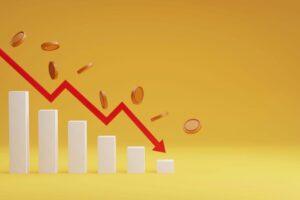Iain Cunningham, Head of Multi-Asset Growth at Ninety One, discusses why structural trends, growing US fiscal risk and the increasing prospect of Trump 2.0 could provide tailwinds for the price of gold in the coming years.
Fixed income markets have already begun pondering the impact of a Trump presidency with notable US treasury volatility post the first presidential debate and some additional underperformance post this weekend’s events. This is because it’s likely that policymaking under a second Trump administration will lean further towards large federal deficits and higher inflation. By themselves, that would already be significant. But combined with how that is likely to interact with existing structural trends and key drivers of the US economy in the next cycle – geopolitics, deglobalisation, decarbonisation, demographics and technology—there are a number of key risks for investors to consider.
First, the prospect of higher and more volatile inflation presents an obvious risk to the real value of a portfolio. Second, there is the issue of the fiscal sustainability of the US government. Third, geopolitics and elements of deglobalisation are driving trends in dedollarisation.
In recent years, the US has chosen a more protectionist path, coupled with a very loose fiscal stance—all of which will likely be amplified in the coming years if a Trump administration returns. Growing geostrategic rivalry as well domestic pressure to provide good, high-quality jobs, which have underpinned protectionism, is spurring spending and investment across a broad spectrum, from the rebuilding of supply chains to the reshoring of industry for national security reasons, and defence spending. This, coupled with global trends in decarbonisation, is amplifying the demand for materials. The US population is ageing, but strong immigration and a large millennial cohort, which is approaching peak household formation and goods demand, have scope to boost aggregate demand. These combined forces are already generating stronger inflationary impulse over the next cycle, and that will likely continue.
At the same time, the US fiscal position continues to deteriorate. US government debt to GDP is over 120%, with no fiscal consolidation in sight. In fact, looking at the US Congressional Budget Office’s (CBO) Long-term Budget Outlook, debt to GDP is expected to rise a further c.65% over the next 30 years. At the end of Q124 the interest expense on US government debt reached $1.06 trillion or 3.75% of GDP. This remains depressed due to the prior decade of low rates, with the effective interest rate on debt currently being c.3%. This is changing quickly though, with c.30% of debt outstanding rolling every year. If, for example, the average US government financing rate was to settle at 4.5%, then the government interest expense would be 5.5% of GDP at present. At this point, and without including the structural primary deficit that the CBO projects (c.2.3%), the US would be crossing the Rubicon where interest expense is higher than nominal GDP potential, and as a result the US would be issuing new debt to pay interest on existing debt, given other spending commitments.
The US may be able to venture down the current fiscal path for some time, given the US dollar’s reserve currency status, but everything has its limits. The probability attached to a US fiscal shock is non-zero and rising. At the same time, the potential holders of US Treasuries are in decline because of trends in dedollarisation. Nations are diversifying reserves away from US dollars, over fears that they can be weaponised against them. Some estimates point to gold holdings in international reserves having close to doubled over the past decade as a result.
The key challenge we face is that the forces described above, which will likely be amplified by a Trump administration, cause a structurally higher rate of inflation over the next decade and require structurally higher US interest rates. This, coupled with the ongoing deterioration in the US fiscal position and a declining holder base could result in risk premia being built into US Treasuries. Investors may then question US fiscal sustainability. At such a point, US authorities would either chose to retrench or repress, to counter such a shock.
We believe that gold stands out as an asset that will likely benefit from several of the structural trends highlighted, as well as from the cyclical tailwinds of a coming Federal Reserve easing cycle, while acting as a key hedge against the emergence of US fiscal risk where the response from US authorities is to repress.




![[uns] house of commons, parliament](https://ifamagazine.com/wp-content/uploads/wordpress-popular-posts/788182-featured-300x200.webp)









